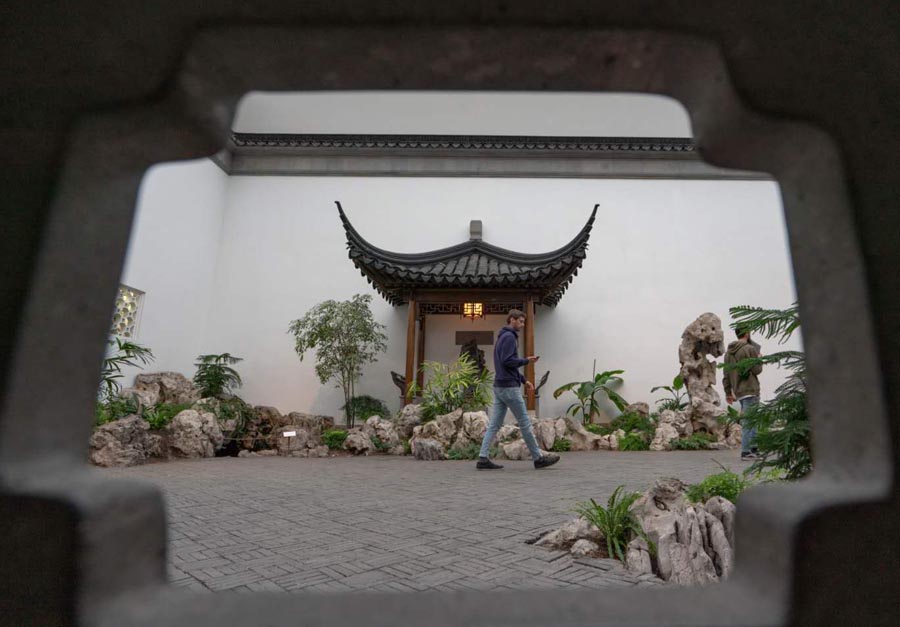 |
|
The Astor Garden at the Metropolitan Museum of Art in New York. [PHOTO BY GAO TIANPEI/CHINA DAILY] |
"By that time we already had the furniture," he says, referring to the adjacent room spartanly filled with a wooden settee, a long side table and a couple of chairs from the Ming Dynasty (1368-1644), a period of consummate minimalism. "If you look at Chinese paintings, furniture is often depicted as being placed inside the gardens. This interaction between the indoor and outdoor is greatly valued by ancient Chinese, and is something that we intended to create with this garden."
Unsurprisingly, paintings have always been Hearn's reference point.
"Symbolism abounds in this place. The gray tiled floor, handmade by artisan-workers from China, reminds me of the clouds, through which the mountain peaks would rise, along a misty band of water," says Hearn, who is behind the current Met show Streams and Mountains without End: Landscape Traditions of China.
"The garden is a way to give people a very physical experience of what they see in two dimensions in a painting. Like the painting, it's a world in miniature."
Hearn, who grew up in Salt Lake City, Utah, is no stranger to the sense of awe induced by nature's magnificence, a feeling the Chinese sought to convey with their atmospheric scrolls.
"I remember climbing the mountains as a boy and looking down from the peak: the city looked so tiny and men so insignificant. Later, when I gazed at the little thatched hut tucked in mountain folds in a typical ancient Chinese landscape, the link was unmistakable."